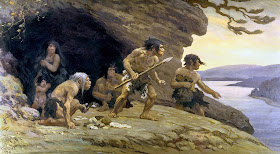A Middle Paleolithic culture that is defined by the development of a wide variety of specialized tools made with prepared-core knapping techniques, such as spear points. It is named for the first such artifacts recovered from the lower rock shelter at Le Moustier, Dordogne, France. Stone tools, scrapers, and points found in the cave came to be recognized as the flint industry present throughout Europe during first half of the last glaciation (Würm) and associated with Neanderthal man. The earliest Mousterian goes back to the Riss glaciation, but most of it comes from the late/middle Würm glaciation, giving a total lifespan from 180,000 bc until c. 30,000 bce. Flintwork of Mousterian type (with racloirs, triangular points made on flakes, and – in some variants – well-made hand axes) has been found over most of the unglaciated parts of Eurasia, as well as in the Near East and North Africa (in the latter two areas, it constitutes the Middle Paleolithic). Three major regional variants have been identified – West, East, and Levalloiso-Mousterian, each with subgroups. In certain industries, called Levalloiso-Mousterian, the tools were made on flakes produced by the Levallois technique. It was a progressive stage in the manufacture of stone tools. Mousterian peoples mainly lived in cave mouths and rock shelters.

Hiç yorum yok:
Yorum Gönder